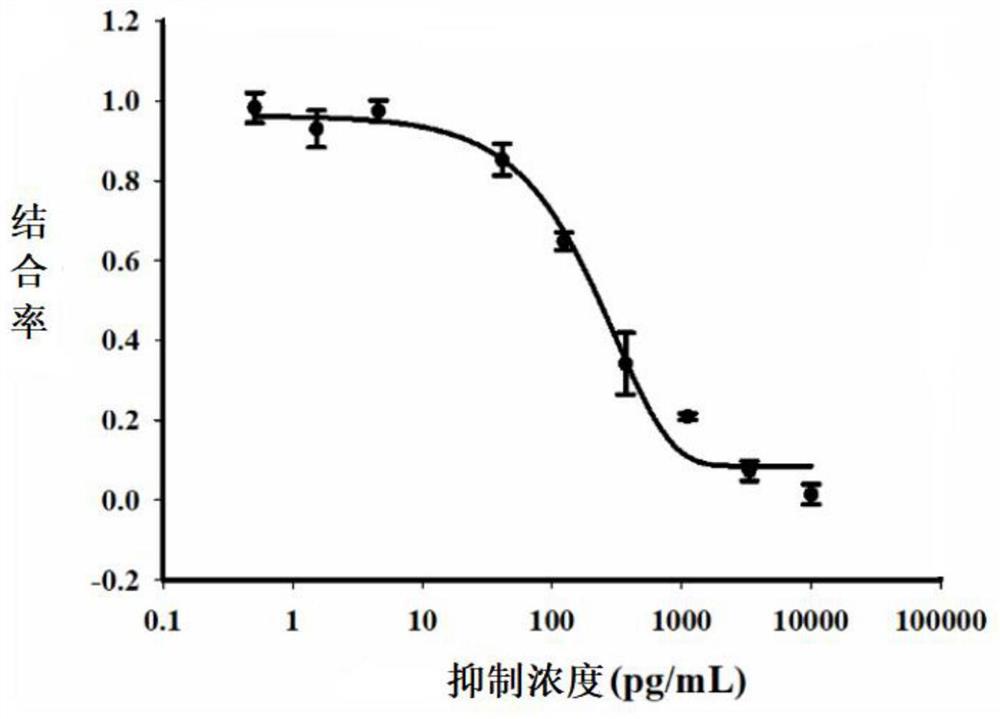Target protein-intein-magnetosome fusion gene, intelligent bacterial expression system constructed by target protein-intein-magnetosome fusion geneand used for automatically purifying product, and preparation method of intelligent bacterial expression system
A technology of fusion gene and expression system, applied in the field of genetic engineering, can solve the problems of protein yield reduction, protein destruction, function destruction, etc., and achieve the effects of low cell fluid viscosity, easy purification, and low production cost
- Summary
- Abstract
- Description
- Claims
- Application Information
AI Technical Summary
Problems solved by technology
Method used
Image
Examples
Embodiment 1
[0088] The construction of embodiment 1 recombinant suicide plasmid
[0089] 1. Use the primers in Table 1 and high-fidelity pfu enzyme to PCR amplify the mamC upstream arm gene, anti-tetrabromobisphenol A nanobody gene, intein gene, mamC gene and mamC downstream arm gene. The PCR system and conditions are as follows:
[0090] PCR system (50μl):
[0091]
[0092] PCR conditions (denaturation → annealing → extension: 30 cycles):
[0093]
[0094] Table 1 Primers used in PCR amplification
[0095]
[0096]
[0097] Note: The underline is the restriction site sequence.
[0098] 2. According to the instructions of the agarose gel DNA recovery kit of Tiangen Biochemical Technology (Beijing) Co., Ltd., the PCR amplification product in step 1 was gel-cut and recovered;
[0099] 3. Use fusion PCR technology to carry out 3-step fusion PCR amplification of each gene fragment recovered in step 2:
[0100] Firstly, fusion gene 1 is obtained by fusion amplification of nano...
Embodiment 2
[0131] Example 2 Screening of recombinant expression strain 1
[0132] The recombinant plasmid pKuTBInCd in the donor strain E. coli S17-1 in Example 1 was transformed into the recipient strain M. gryphiswaldensense MSR-1 by parental conjugation experiment. Specifically: 1) S17-1 single colony was inoculated in 4ml liquid LB, cultured overnight at 37°C, 200rpm; 2) S17-1 was inoculated in 10% antibiotic-free liquid LB (200μl S17-1+2ml LB ), 30°C, 150rpm, cultured for 3h; 3) MSR-1 was activated twice in sodium lactate medium, and cultured for the third time to OD 565 0.8-1.0; 4) Mix 300 μl of cultured S17-1 in 2) and 1 ml of MSR-1 in 3), centrifuge at 12,000 rpm for 1 min, and discard the supernatant in an ultra-clean bench; 5) Use 1 ml of glutamine Wash the bacteria with sodium glutamate selective medium, centrifuge at 12,000rpm for 1min, discard the supernatant in an ultra-clean workbench, and repeat once; 6) Resuspend the bacteria in 5) with 50 μl of sodium glutamate selecti...
Embodiment 3
[0147] The construction of embodiment 3 recombination shuttle plasmids
[0148] 1. Utilize the primers in Table 2 and the high-fidelity pfu enzyme to amplify the lyase gene and the nuclease gene by PCR respectively. The PCR system and conditions are as follows:
[0149] PCR system (50μl):
[0150]
[0151]
[0152] PCR conditions (denaturation → annealing → extension: 30 cycles):
[0153]
[0154] Table 2 Primers used in PCR amplification
[0155]
[0156]
[0157] Note: The underline is the restriction site sequence.
[0158] 2. According to the instructions of the agarose gel DNA recovery kit of Tiangen Biochemical Technology (Beijing) Co., Ltd., the PCR amplification product in step 1 was gel-cut and recovered;
[0159] 3. Use fusion PCR technology to add signal peptide to the nuclease gene recovered in step 2 and add a promoter to the lyase gene. The signal peptide sequence and promoter sequence are shown in Table 2:
[0160] The reaction system and con...
PUM
 Login to View More
Login to View More Abstract
Description
Claims
Application Information
 Login to View More
Login to View More - Generate Ideas
- Intellectual Property
- Life Sciences
- Materials
- Tech Scout
- Unparalleled Data Quality
- Higher Quality Content
- 60% Fewer Hallucinations
Browse by: Latest US Patents, China's latest patents, Technical Efficacy Thesaurus, Application Domain, Technology Topic, Popular Technical Reports.
© 2025 PatSnap. All rights reserved.Legal|Privacy policy|Modern Slavery Act Transparency Statement|Sitemap|About US| Contact US: help@patsnap.com



